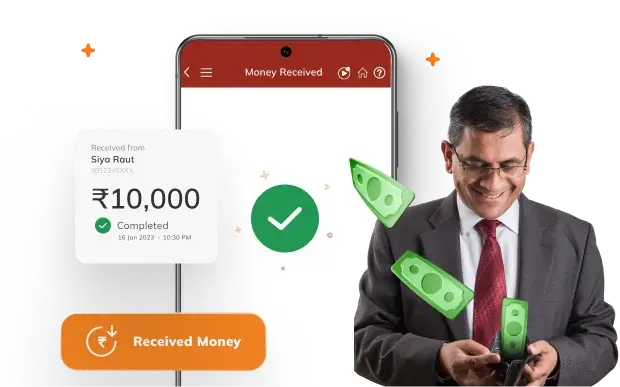RTGS Transfer Trasaction charges
For RTGS transactions initiated online:
There are no transaction charges for RTGS requests initiated through any of the online modes: Internet Banking, iMobile Pay app and Pockets app.
For RTGS transactions initiated through any ICICI Bank Branch:
| Trasaction Range | charges |
|---|---|
| Above ₹2 lakh Up to ₹5 lakh | ₹20 + GST |
| Above ₹5 lakh Up to ₹10 lakh | ₹45 + GST |
Frequently Asked Questions (FAQs) for RTGS
What is the process of RTGS Funds Transfer?


The process of Real-Time Gross Settlement (RTGS) funds transfer begins with adding a beneficiary. Once a beneficiary is added, you can go on to make a fund transfer.
For online transactions, both Internet Banking and third-party funds transfer facilities should be in the active state.
Steps to add Beneficiary for RTGS:
- Step 1- Log in to ICICI Bank Internet Banking/iMobile app with your user ID and password.
For iMobile
- Step 2– Go to ‘Funds Transfer’ tab under the ‘Transact’ tab
- Step 3- Click on ‘Add a Payee’, and then select the Beneficiary Type ‘Other Bank Payee’
- Step 4– Enter the Beneficiary Account details or Credit Card number
- Step 5– Select the Beneficiary’s IFSC, using the bank and branch name
- Step 6– Click on ‘Add’, then click on ‘Confirm’
- Step 7– Authenticate the registration using OTP. Once successfully authenticated, the Payee is available for transactions.
For Internet Banking
- Step 2– Go to ‘Funds Transfer’ tab under the ‘Payments and Transfer’ tab.
- Step 3- Click on ‘Add a Payee’, and then select the Beneficiary Type ‘Other Bank Payee’
- Step 4– Enter the Beneficiary Account details or Credit Card number
- Step 5– Select the Beneficiary’s IFSC, using the bank and branch name
- Step 6– Click on ‘Add’, then click on ‘Confirm’
- Step 7– Authenticate the registration using OTP. Once successfully authenticated, the payee is available for transactions.
Steps to make your RTGS Funds Transfer:
Log in to Internet Banking/iMobile.
- Step 1– Go to the ‘Fund Transfer’ tab
- Step 2– Select ‘Beneficiary’ from the list of registered beneficiaries
- Step 3– Select the Debit Account, enter the amount and add remarks (optional)
- Step 4– Select RTGS as the payment method
- Step 5– Review the details, and, if all is correct, click on ‘Confirm’ to complete the process
- Step 6– Authenticate the transaction using OTP and click on ‘Submit’.
What are the modes through which I can initiate an RTGS transaction?


- Internet Banking– Add a Beneficiary using the ‘Funds Transfer’ option with the IFSC and the beneficiary bank details. Transfer funds once the beneficiary is added. Keep your mobile phone handy. An OTP will be sent to your registered mobile number.
- Branch– Visit the nearest ICICI Bank branch and fill the RTGS form to do an RTGS transaction.
What information is required when using the RTGS funds transfer service?


When using RTGS funds transfer service, there are a few essential details that need to be provided:
- Amount to be remitted
- Remitting customer's account number, which is to be debited
- Name of the beneficiary bank and branch
- Name of the beneficiary
- Account number of the beneficiary
- The IFSC of the receiving branch.






















